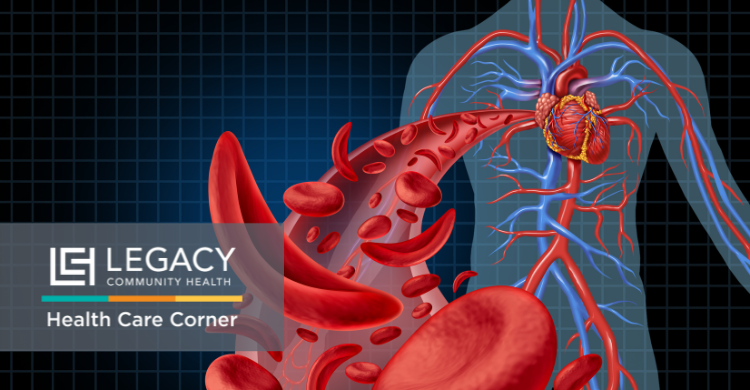Monday, June 19th was Sickle Cell Awareness Day. Take the time to learn more about this blood disorder and how it affects people in their day-to-day life.
by Ashley Guidry
According to the Centers for Disease Control and Prevention (CDC), sickle cell disease affects approximately 100,000 Americans. Sickle cell disease (SCD) is a genetic condition that forms when a child receives two genes from each parent. Those two genes then form a group of abnormal red blood cell disorders. Healthy red blood cells are typically round, however with SCD, the red blood cells become sticky and are shaped like a sickle. Sickle cells block blood flow by sticking to the narrow blood vessels which deprives organs of blood and oxygen.
SCD is diagnosed with a simple blood test. Although SCD is often found at birth during routine newborn screening tests, symptoms can appear in children around the age of 5 months. SCD affects approximately 1 in 365 African-American births and 1 in 16,300 Hispanic-American births. Early diagnosis is important for children because they are at high risk of infection and health problems if SCD is not caught in time. Children can experience anemia, frequent infections, delayed puberty and vision problems.
For adults living with the disease, symptoms vary from person to person. The lack of oxygen-rich blood damages nerves and organs, which can become fatal. Stroke, acute chest syndrome and pregnancy complications are more issues that can affect SCD adults’ daily lives. The most common symptom of sickle cell anemia is chronic or constant pain. This pain contributes to fatigue making it difficult to sleep.
Many people with SCD can experience obstructive sleep apnea (OSA) which causes blocked breathing. About two-thirds of children with SCD have OSA. These complications greatly impact a person’s mental health and self-esteem. About 1 in 3 people with SCD deal with depression. The symptoms are so similar to other SCD complications that it unfortunately gets left untreated.
There are simple steps people with SCD can do to reduce pain and infection:
- Drink plenty of water.
- Regulate body temperature.
- Try to avoid places that expose you to high altitudes.
- Get vaccinated.
- Wash your hands often.
The only FDA-approved therapy that has the potential to treat SCD is a bone marrow or stem cell transplant. However, these transplants are very risky and can have serious side effects.
To learn more about sickle cell and how to help loved ones living with the condition, consult your provider for guidance.

